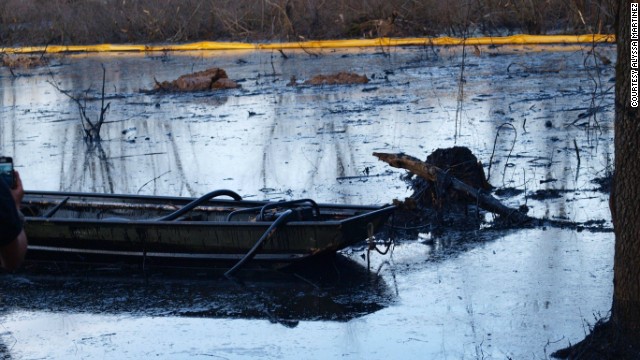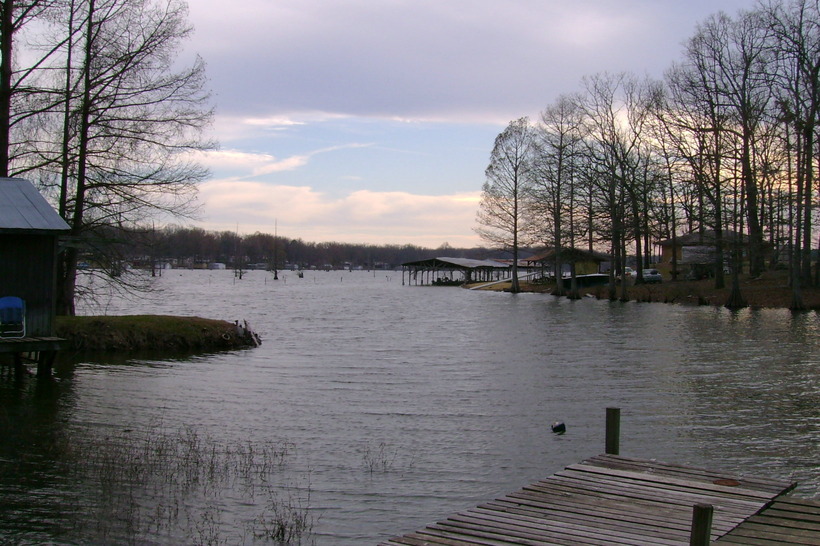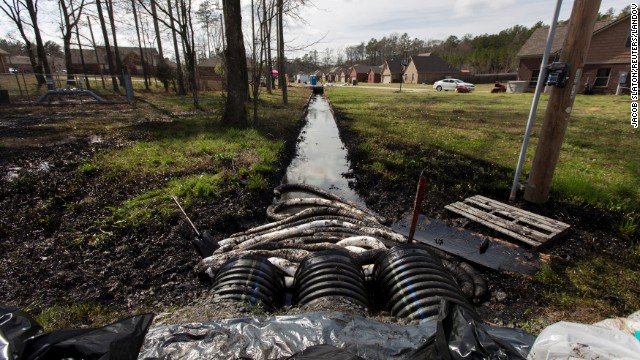Back in the mid-1970’s, Amory Lovins, currently with the Rocky Mountain Institute, said “The cheapest unit of energy is the one you don’t need to buy.” He called this the “Nega-Watt.” We now know that the Nega-Watt is also the cleanest unit of energy. And the second cheapest – and second cleanest – is the one which doesn’t need fuel and doesn’t create waste, which might be called the “Nega-Fuel-Watt” or “Nega-Waste-Watt.”
Edward McAllister, reported in Reuters, covered by Yahoo News,
Warren Andrews had just finished putting up balloons for his stepdaughter’s 18th birthday party at their suburban home in Mayflower, Arkansas, when his wife came inside and said something was wrong.
After stepping out of his house, and taking one glance, he immediately dialed 911.
“I don’t know what’s going on, but I’ve got a river of oil coming down the street at me,” Andrews told the operator.
Five minutes later, the slick of noxious black crude spewing from a ruptured Exxon Mobil pipeline was eight feet wide, six inches deep and growing fast.
We now know that an Exxon Mobil pipeline, like the proposed Keystone Pipeline, carrying Canadian crude oil ruptured on Friday, March 29, 2913, spilling an estimated 500,000 gallons of oil into the grounds of the town. 500,000 gallons is roughly 11,000 barrels.
Mayflower, Arkansas (City-Data / Wikipedia) is a city of about 2,500 people, on the shores of Lake Conway and about 25 miles north of Little Rock. Lake Conway used to have great fishing.
According to The Guardian,
Exxon said federal, state and local officials were on site and the company said it was staging a response for a spill of more than 10,000 barrels “to be conservative”. Clean-up crews had recovered approximately 4,500 barrels of oil and water.
Maybe I’m being cynical, but Exxon Mobil said “We spilled more than 10,000 barrels of oil, and we recovered approximately 4,500 barrels of oil and water.” Back when the Deepwater Horizon disaster was ongoing, BP said “5,000 barrels per day” were gushing into the Gulf of Mexico. We now know it was 60,000 barrels per day. It seems plausible to consider that Exxon Mobil’s “Conservative” estimate of “more than 10,000 barrels” could turn out to be 50,000 barrels.
Regardless of how much oil was spilled in Mayflower, and how much will be cleaned up, we know that with coal, oil, methane, and nuclear power we can expect these kinds of events. Exxon Mobil seems to be absorbing the cost of this spill – internalizing at least some of the externalities. But we call them “Economic Externalities” and we don’t embed the cleanup costs and the cost of lost ecosystem services into the price of fuel or energy. But we should. These costs are integral to the systems. Mountain-top removal mining destroys mountains. Coal ash spills, like 1 billion gallons spilled into the Clinch and Emory rivers at the Kingston Steam Plant, Kingston, Tennessee, 12/22/08, have a serious impact. Oil spills, like the Deepwater Horizon that began in April, 2010, and put roughly 5.1 Million barrels of oil into the Gulf of Mexico, kill fish, shrimp, turtles, and at best only harm tourism for a few years. Natural gas flared off from fracking oil wells because it’s too expensive to capture, contributes to climate change. And there have been four nuclear power plant meltdowns between 1956, when the Price – Anderson Act created the commercial nuclear power industry and like and the three meltdowns at Fukushima Dai-ichi, in 2011.
We also know that there are better – cleaner – renewable energy sources: Wind, Solar, Geothermal, Marine Hydro, and bio-fuels from food waste, farm waste, and land-fills.
There are more pictures of the Mayflower, Arkansas oil spill at CNN.


